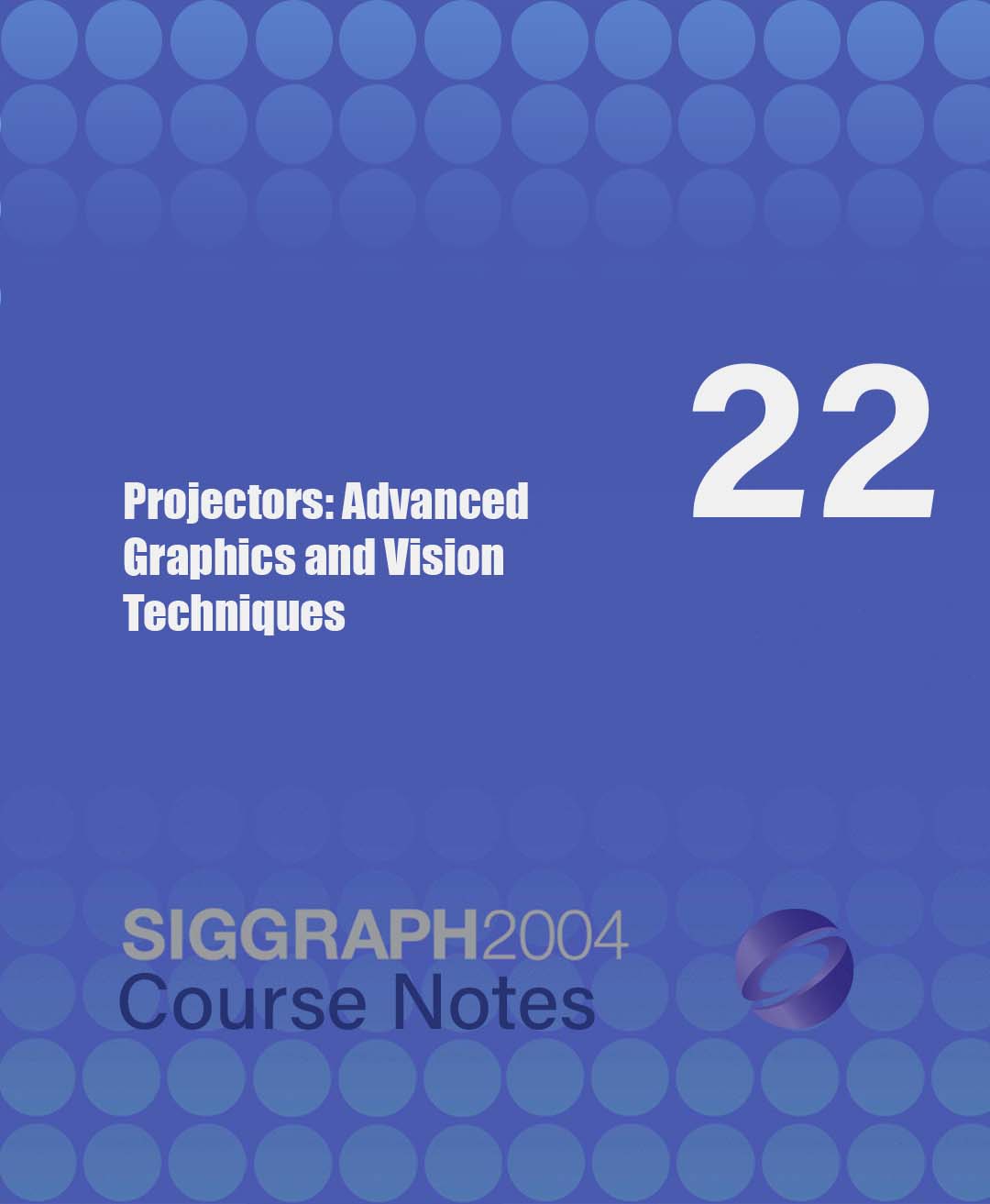“Projectors: Advanced Graphics and Vision Techniques” by Raskar
Conference:
Type(s):
Entry Number: 22
Title:
- Projectors: Advanced Graphics and Vision Techniques
Abstract:
Prerequisites
General knowledge of 2D and 3D geometric concepts. Basic understanding of computer graphics theory, including perspective projection and rendering, is assumed. Familiarity with video projection and basic concepts in computer vision is helpful but not necessary.
Intended Audience
Artists, designers, and programmers who use or build applications for innovative projector-based systems and want to learn powerful geometric tools.
Description
New advances in projective geometry, computer vision and rendering enable the use of projectors beyond conventional applications like immersive workbenches and tiled large-scale displays. Due to the falling cost of projector and graphics resources, there has been considerable interest in experimenting with projector-based systems in universities, labs, industries, and artworks. A novel class of applications is emerging, involving illumination of complex 3D shapes, dynamic interaction between movable surfaces and projectors, and combining projectors with cameras, trackers, mirrors, and tilt-sensors. Since the topics in large-format displays are now mature, this advanced tutorial discusses geometric techniques for using projectors in a range of applications, especially innovative configurations.
Many ideas in computer vision, projective geometry, optics and color mapping are still relatively new to designers, programmers and artists who are otherwise familiar with computer graphics techniques. A larger problem is that those fields encompass many geometric and algorithmic concepts that involve a steep learning curve. For example, programmers using projectors for creative applications for research or art installations face challenges when they try to write the code on their own or try to understand how to use the available solutions. Fortunately, only subsets of a large array of techniques are really relevant for projector-based applications. The goal of this course is to present them in a single tutorial in a compact form.
The course describes calibration issues such as estimating the projector model, computing image-transfer functions for planar (via homography) and curved display surfaces, and corresponding parametric and non-parametric approaches. The rendering techniques include device integration (camera, tracker, mirror), image warping for perspectively correct views, illumination of complex geometry, and emerging applications. In addition, the course summarizes practical insights, implementation details (with pseudo-code), and examples for a variety of systems in art, research, and industry.




